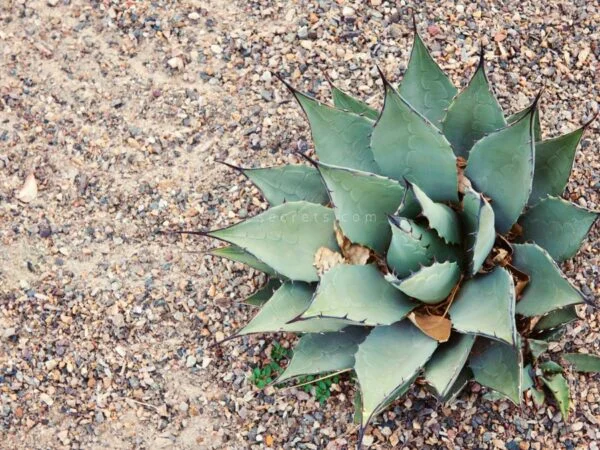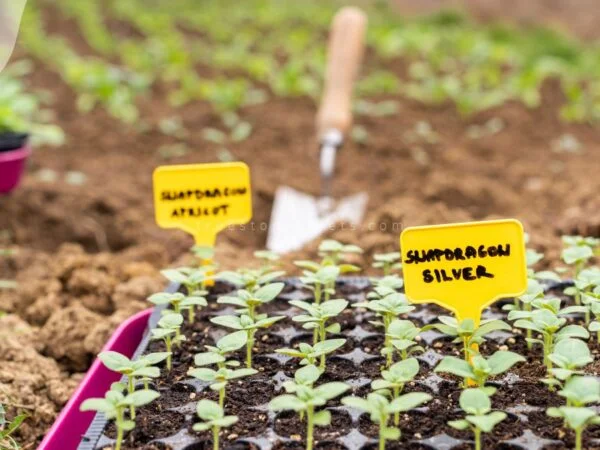Curious about growing sycamore trees from seed? Unravel the secrets of nurturing these majestic seedlings right in your backyard. With a dash of historical context, discover how ancient civilizations revered sycamores for their resilience and grandeur. Dive into this guide to learn the ropes of cultivating your own flourishing sycamore tree haven.
Ready to embark on a green journey that connects you with nature's timeless wonders and spring garden specialist? Let's delve into the art of germinating and caring for sycamore seeds, unlocking nature's magic within your hands. Get set to witness the growth cycle unfold before your eyes as you nurture these iconic trees from humble seeds to towering symbols of strength and vitality.
Key Takeaways
- Collect sycamore seeds: Gather seeds in the fall when they are mature and store them properly.
- Prepare seeds carefully: Soak seeds for 24 hours before planting to aid germination.
- Plant seeds correctly: Sow seeds in well-draining soil and keep them moist but not waterlogged.
- Monitor germination: Be patient as sycamore seeds can take several weeks to sprout.
- Transplant saplings with care: Move seedlings to larger containers once they have grown a few inches tall.
- Provide proper care: Regularly prune, protect from pests, and follow maintenance tips for healthy sycamore trees.
Understanding Sycamore Trees
Types
Sycamore trees, such as the American sycamore and the London plane, each have unique characteristics. Knowing these differences can help you select the right one for your garden or landscape. For instance, American sycamores have large leaves that turn a beautiful yellow in autumn.
On the other hand, London planes are known for their mottled bark that peels away to reveal patches of green and cream underneath. These variations in appearance, such as a sycamore tree, can add aesthetic value to your outdoor space based on your preferences. By understanding these distinctions, you can make an informed decision when choosing which type of sycamore tree to grow.
Growth Habits
Sycamore trees are popular due to their rapid growth rate, making them ideal for creating shade quickly in your yard or garden. Their broad sycamore tree canopy provides ample shade not only for humans but also creates shelter for various wildlife species seeking refuge from the sun or predators. Sycamores boast deep root systems that anchor them firmly into the ground.
These extensive roots help sycamores endure harsh weather conditions like strong winds and droughts by providing stability and enabling them to access water sources deep underground. This resilience makes sycamore trees a reliable choice for landscaping projects where sturdy and robust vegetation is needed.
Benefits
Growing sycamore trees from seed offers numerous environmental advantages beyond just aesthetics. These trees play a crucial role in enhancing air quality by absorbing pollutants through their leaves and releasing oxygen during photosynthesis processes. Furthermore, their dense foliage acts as natural privacy screens that shield your property from prying eyes while also blocking unwanted views.
Another significant benefit of cultivating sycamores is their ability to attract diverse wildlife like birds due to the abundance of food sources provided by their seeds and shelter found within their branches. By fostering biodiversity in your garden through these majestic trees' presence, you create a harmonious ecosystem where different species coexist peacefully.
Collecting Sycamore Seeds
The first step is collecting the seeds. During autumn, mature sycamore trees naturally drop their seeds to the ground. Look for sycamore tree seeds that are intact, without any signs of damage or disease. Gathering more seeds than you need is advisable to ensure a higher chance of successful germination.
Drying the collected sycamore seeds is crucial before storing them for planting. Place the seeds in a well-ventilated area and allow them to dry naturally over several weeks. Ensuring that the seeds are completely dry before storage helps prevent mold growth and rotting. This drying process not only enhances seed viability but also boosts the likelihood of successful germination.
After drying, it's essential to store sycamore tree seeds properly until you're ready to plant them. Use paper bags or envelopes as storage containers since they allow air circulation, preventing moisture buildup that can harm the seeds. Label each container with the date of collection and any other relevant information.
Store your labeled containers in a cool, dark place with consistent temperature and humidity levels—ideally around 40°F (4°C) in an area like a refrigerator or cellar where temperatures remain stable throughout.
Preparing Sycamore Seeds
Cleaning
To ensure successful growth, clean the sycamore seeds meticulously. Use a soft brush or cloth to remove any debris or dirt. Check each seed for damage or discoloration and discard those that are not healthy. By cleaning the seeds, you guarantee that only viable ones are used for planting.
It's crucial to store sycamore seeds properly if you're not ready to plant them immediately. Place the seeds in a sealed container or plastic bag and keep them in the refrigerator. Refrigeration is essential as it helps maintain the seeds' viability by preventing premature germination. Remember to label the container with the collection date for easy tracking of freshness.
Planting Sycamore Seeds
Soil Selection
When planting sycamore seeds, opt for a well-draining soil mix. A blend of sandy loam and organic matter creates an optimal environment for seed germination. Avoid dense clay soils that trap excess water, which can hamper seedling growth. It's crucial to provide the right soil conditions to support healthy sycamore tree development.
For successful sycamore seed growth, plant them at a depth of 1 inch (2.5 cm) in the prepared soil. This depth promotes adequate moisture retention and shields the seeds from extreme temperature changes, fostering their sprouting process effectively. Be cautious not to bury the seeds too deeply as it might hinder their ability to emerge from the soil.
Covering Seeds
After placing sycamore seeds in the ground, lightly cover them with a thin layer of either soil or compost. This covering acts as a protective barrier against drying out while offering insulation during germination, aiding in creating favorable conditions for seedling emergence. Remember not to apply a thick covering layer since it could obstruct the young plants' growth.
Germination Process
Sycamore seeds require specific conditions for successful germination. Warmth plays a crucial role in the germination process. Placing the planted seeds in a warm location with temperatures around 70°F (21°C) is essential. Consistent warmth aids in faster and more uniform seed germination, ensuring optimal growth.
Moreover, maintaining adequate moisture levels is vital during germination. It's important to keep the soil consistently moist but not waterlogged while waiting for the seeds to sprout. To monitor moisture levels effectively, gently touch the soil surface regularly. Using a spray bottle or misting system can help you control and maintain proper moisture without risking overwatering your sycamore seeds.
Providing ideal conditions like warmth and proper moisture levels significantly impacts their growth potential. By understanding these key factors of germination, you can enhance your success rate in growing sycamore trees from seed.
Transplanting Saplings
When to transplant
Transplant seedlings when they have sturdy roots and multiple leaves, usually 6 to 8 weeks after germination. Early transplant may harm the tree due to inadequate root development.
Wait until the seedling has a well-established root system before moving it. This ensures the young tree can thrive in its new environment without setbacks.
How to transplant
For successful transplantation, select a spot with good drainage and ample sunlight for your sycamore sapling. Dig a hole slightly larger than the root ball of the seedling.
Carefully extract the seedling from its container and place it into the prepared hole. Make sure that the top of the root ball aligns with the soil surface for optimal growth.
Sycamore Tree Care
Light and Soil
Sycamore trees, like most plants, need adequate sunlight to thrive. Ensure the planting spot gets at least 6 hours of direct sun daily. Sycamores prefer soil that drains well and is rich in organic matter for healthy growth. This type of soil provides essential nutrients for the trees to develop robustly.
When considering where to plant your sycamore seeds or saplings, keep in mind that these trees do best in areas with full sun or partial shade. In regions where there's limited sunlight exposure, it's crucial to find a location that allows enough light for the tree to photosynthesize effectively.
Water and Temperature
Proper watering is key when caring for sycamore trees. During dry spells, ensure they receive regular watering sessions rather than frequent shallow ones. Deep watering encourages root growth and helps establish a strong foundation for the tree.
Moreover, once established, sycamores are hardy and can withstand varying temperatures well. They don't require meticulous temperature control but thrive in environments with moderate weather conditions.
Fertilizer
To support healthy growth during springtime, applying a balanced slow-release fertilizer is beneficial for sycamore trees' development. Following the manufacturer's guidelines regarding dosage and application methods ensures you provide adequate nourishment without overdoing it.
While fertilizing is essential for optimal growth, be cautious not to go overboard with it as excessive fertilization may lead to weak growth or nutrient imbalances within the tree.
Pruning and Propagating
Pruning techniques
Prune sycamore trees in late winter or early spring. This timing allows the tree to heal efficiently before new growth emerges. Removing dead, damaged, or crossing branches is vital for enhancing the tree's structure and airflow. Utilize clean and sharp pruning tools to ensure precise cuts that won't harm the tree unnecessarily.
When you prune sycamore trees, focus on eliminating any branches that hinder healthy growth. By cutting away dead wood, you promote new growth while preventing diseases from spreading throughout the tree.
Propagation methods
Apart from growing sycamores from seeds, there are other propagation methods available. Hardwood cuttings involve taking sections of dormant stems and encouraging them to root in a suitable medium. Air layering, another technique used for propagation, encourages a portion of the stem to form roots while still attached to the parent plant.
Propagation through hardwood cuttings can be an effective way to create new sycamore trees without relying solely on seeds. This method allows you to reproduce specific characteristics of mature sycamores by using cuttings from established trees as starting material.
Protecting from Pests and Diseases
Common pests
Sycamore trees are prone to attacks by various pests like aphids, scale insects, and caterpillars. To safeguard your trees, keep a close eye on the leaves for any signs of infestation. Look out for distorted leaves or sticky residue which could indicate a pest problem. If you notice any issues, consider using organic or chemical treatments to eliminate the pests.
Regular inspection is key in identifying pest problems early on before they escalate. By promptly addressing these issues, you can prevent extensive damage to your sycamore trees caused by these pesky invaders.
- Regularly inspect foliage for signs of infestation
- Use appropriate treatments to control pest populations
- Prompt action can prevent significant damage to the trees
Plant diseases
Diseases such as anthracnose, powdery mildew, and leaf spot can affect sycamore trees. Implement proper sanitation measures by removing fallen leaves and debris regularly as this helps in preventing the spread of diseases among your trees. In severe cases where diseases persist or worsen, consider using fungicides or other suitable treatments to manage or even prevent further disease outbreaks.
Maintaining good hygiene practices around your sycamore trees goes a long way in protecting them from potentially harmful plant diseases that could compromise their health and growth.
Overwintering and Maintenance Tips
Overwintering Saplings
To protect young sycamore saplings during winter, apply a layer of mulch around the base. Mulching serves as insulation for the roots, safeguarding them from extreme temperature changes. Be cautious not to add too much mulch, as excess moisture can cause root rot. By implementing these measures, you ensure the saplings' survival through harsh winter conditions.
When nurturing your sycamore trees, regular monitoring is essential to track their growth and overall well-being. Promptly prune any dead or diseased branches to maintain the tree's vitality and health. Provide adequate water, nutrients, and care throughout the tree's life cycle for optimal growth and long-term success.
Maintenance Tips
- Apply a protective layer of mulch around sycamore saplings during winter.
- Monitor sapling growth regularly to assess health.
- Prune dead or diseased branches promptly.
- Avoid excessive mulch depth that can lead to root rot.
- Provide sufficient water, nutrients, and care for long-term success.
Congratulations on completing the journey from sycamore seed to thriving tree! By following the steps outlined, you've equipped yourself with the knowledge and skills needed to nurture your sycamore saplings. Remember, just like a tree needs water and sunlight to grow, your dedication and care are essential for your sycamores to flourish.
Now that you're armed with the secrets of sycamore success, go out there and put your green thumbs to good use! Whether you're a seasoned gardener or a budding enthusiast, growing sycamores from seed is a rewarding experience that connects you with nature in a unique way. So, grab those seeds, get your hands dirty, and watch as your little seeds grow into magnificent trees right before your eyes!
Frequently Asked Questions
How long does it take for sycamore seeds to germinate?
Sycamore seeds typically take 1-2 months to germinate. Be patient and ensure consistent moisture and warmth for successful germination.
What is the best time of year to plant sycamore seeds?
The ideal time to plant sycamore seeds is in the fall, just before winter sets in. This allows the seeds to stratify naturally over winter and sprout in spring.
Do I need any special tools or equipment for planting sycamore seeds?
No, you don't need any specialized tools. Basic gardening supplies like pots, soil mix, water, and sunlight are sufficient for planting sycamore seeds successfully.
How often should I water my young sycamore saplings?
Water your young sycamores deeply once a week during dry periods. Ensure the soil remains moist but not waterlogged to promote healthy growth.
Can I grow a sycamore tree indoors as a houseplant?
While possible when young, mature sycamores require outdoor conditions due to their size. Consider transitioning indoor-grown saplings outside gradually as they grow taller.
Image Source: Paid image from CANVA





